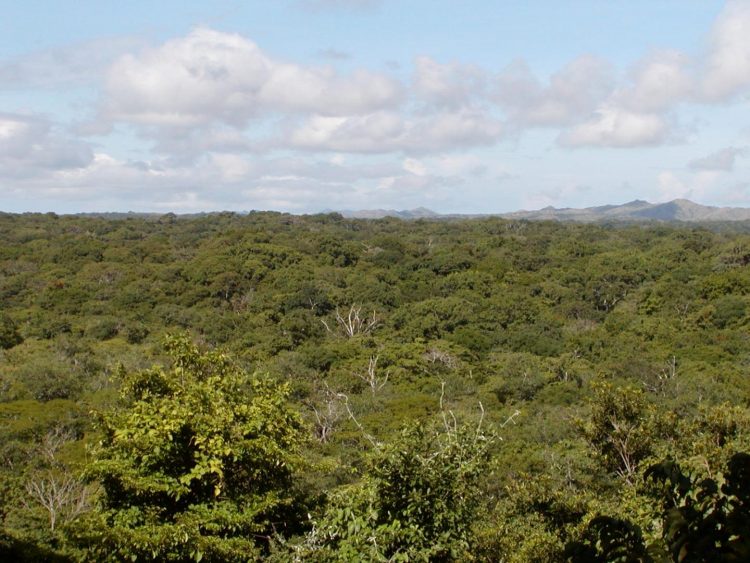Variation in antibiotic bacteria in tropical forest soils may play a role in diversity

This is a dry tropical forest where soil samples were collected. Credit: Dr. Jennifer Powers
A study published October 28 in the journal Biotropica represents a step toward a better understanding of the role antibiotic-bacteria play in the ecology of tropical forests.
University of Minnesota researchers, led by Kristen Becklund, found that antibiotic production by soil bacteria was widespread, but that the abundance and activity of the microbes varied across the landscape depending, in part, on nutrient availability.
“Our results suggest substantial differences in the capacities of microbial communities to suppress soil-borne diseases in tropical forests,” says Becklund. “The fact that we are seeing all this variation is exciting because it means that these bacteria may be influencing diversity in tropical forests.”
Differences in the capacities of microbial communities to suppress soil-borne diseases in tropical forests could impact the composition of the forest itself. Antibiotics in soil are believed to act as weapons that allow microbes to kill their competitors, including pathogens.
This antibiotic inhibition can lead to declines in populations of plant pathogens and can even result in the development of disease-suppressive soils. Because different plants are susceptible to different pathogens and diseases, variation in the abundance, effectiveness and specificity of microbially-produced antibiotics has the potential to influence not only plant disease and productivity, but also the composition of tree species in the forest.
“This study is an initial first step to open the black box of microbial community function in tropical forest soils,” says Powers.
Future studies will focus on the causes of the variation in density and activity and the potential consequences for tropical forest communities.
Becklund is a graduate student in the College of Biological Sciences' Ecology, Evolution and Behavior program. Co-authors include Linda Kinkel, a professor in the Department of Plant Pathology in the College of Food, Agricultural and Natural Resource Sciences, and Jennifer Powers, a professor in the Departments of Ecology, Evolution and Behavior and Plant Biology in the College of Biological Sciences.
Media Contact
More Information:
http://www1.umn.edu/twincities/index.htmlAll latest news from the category: Agricultural and Forestry Science
Newest articles

Bringing bio-inspired robots to life
Nebraska researcher Eric Markvicka gets NSF CAREER Award to pursue manufacture of novel materials for soft robotics and stretchable electronics. Engineers are increasingly eager to develop robots that mimic the…

Bella moths use poison to attract mates
Scientists are closer to finding out how. Pyrrolizidine alkaloids are as bitter and toxic as they are hard to pronounce. They’re produced by several different types of plants and are…

AI tool creates ‘synthetic’ images of cells
…for enhanced microscopy analysis. Observing individual cells through microscopes can reveal a range of important cell biological phenomena that frequently play a role in human diseases, but the process of…





















